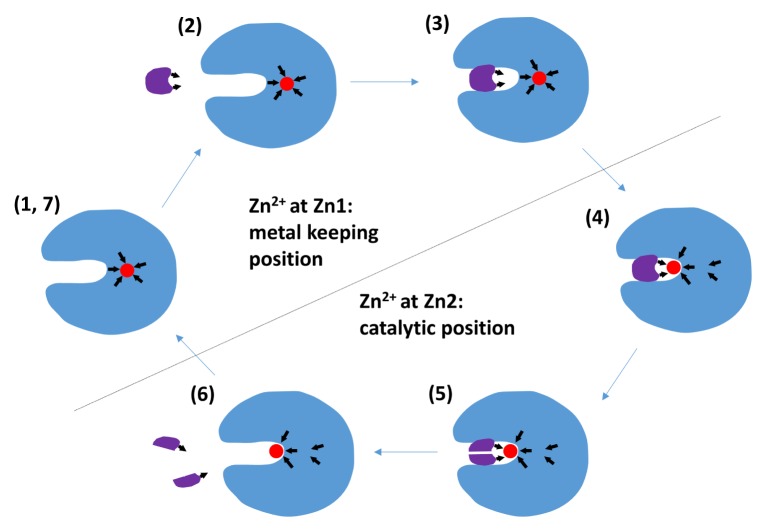Fig. 4.
Proposed mechanism of active site Zn2+ movement in EcFBA. (1) Native EcFBA structure with a metal ion at the interior protein (Zn1). (2) The substrate contains a metal-coordinating motif. The active site surface also contains a metal-binding site (Zn2). (3) When substrate binds at active site, Zn2 is formed with more electronegative coordinators. (4) The completely formed Zn2 recruits a metal ion from Zn1 to Zn2. (5) The active form of EcFBA performs catalytic reaction. (6) Products are released from the active site and metal ion at Zn2 loses parts of coordination that had been provided by the substrate. (7) Metal ion at Zn2 returns to Zn1, which has more complete coordination at the interior of the protein. The arrows show the direction of coordination by His and Glu residues and substrate.

